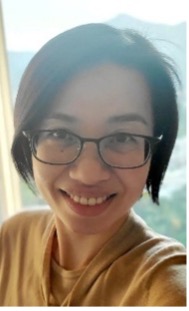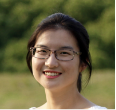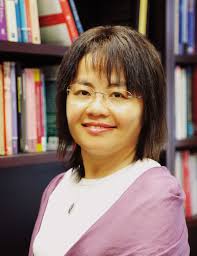CHILDES Mandarin-English HKMECC Corpus

|
Ziyin Mai
Department of Linguistics and Modern Languages
Chinese University of Hong Kong
maggiezymai@cuhk.edu.hk
website
|

|
Mengyao Shang
Department of Linguistics and Modern Languages
Chinese University of Hong Kong
shang.melody@link.cuhk.edu.hk
|

|
Jingyao Liu
Department of Linguistics and Translation
City University of Hong Kong
jingyliu27-c@my.cityu.edu.hk
|

|
Virginia Yip
Linguistics and Modern Languages
Chinese University of Hong Kong
vcymatthews@cuhk.edu.hk
website
|
| Participants: | 4 |
| Type of Study: | longitudinal, naturalistic |
| Location: | Hong Kong |
| Media type: | audio |
| DOI: | doi:10.21415/NRD3-JZ30 |
Browsable transcripts
Download transcripts
Link to media folder
Citation information
Mai, Z., Shang, M., Liu, J., Yan, S., Matthews, S., & Yip, V. (2024)
Acquiring Chinese in US, Hong Kong and Beijing: three new corpora and
three verbal structures. Paper presented at the XVIth International
Congress for the Study of Child Language (IASCL-2024), July 15-19,
Charles University, Prague, Czech Republic.
In accordance with TalkBank rules, any use of data from this corpus
must be accompanied by at least one of the above references.
Project Description
This corpus documents the early development of four Mandarin-English
bilingual children in Hong Kong. The children were born to
Mandarin-speaking parents and raised bilingually in Mandarin and
English, with minimal or low-level exposure to Cantonese (biographies of
individual children below). Their bilingual development was documented
longitudinally through monthly video recording of them interacting with
a trained research assistant at home for 24 months (30 minutes per
language per month; starting age ranging from 2;10 to 4;5). The parents
of the children are originally from mainland China, speaking Mandarin
Chinese as their native language and highly proficient in English. At
time of recruitment, the children were attending an international
kindergarten, with English as the medium of instruction and daily
hour-long Mandarin lessons as part of the curriculum. All children
remained in the same kindergarten and/or advanced to the same
international primary school except for Gabriel, who attended a
Cantonese-English bilingual kindergarten for 12 months during the
observation period. Overall, the children had substantial exposure to
Mandarin much earlier than to English, and they used mostly Mandarin at
home and English at school, with minimal exposure to Cantonese outside
home in three out of four cases. They can be considered as Mandarin-L1
English-L2 sequential bilingual children who develop their languages in
the one context-one language model during the study period. Biographies
of individual children are provided below.
Madison
Madison was raised in Hong Kong. She is the only child of the family.
Her parents are both from mainland China and had lived in the US for
years before moving to Hong Kong. During the study period, Madison’s
primary caretakers were her mother and a Burmese helper; her father and
grandparents also spent considerable time with her. Her mother’s native
tongue is Mandarin but is also highly proficient in English. At home,
her parents and grandparents mainly spoke Mandarin with her, and her
helper used a mix of Mandarin and English, and occasionally Burmese.
Madison’s formal schooling began at 3;0, which was predominantly in
English except for daily Mandarin classes (45 minutes). She was exposed
to a variety of languages including English, Mandarin and Cantonese in
extracurricular activities. Madison was recorded monthly from 4;5 to
6;4. Currently this corpus contains 49 recordings of Madison, with 24
recordings in Mandarin and 25 in English.
Alex
Alex was raised in Hong Kong and is the only child of the family. Both
of his parents are native speakers of Mandarin and highly proficient in
English. During the study period, Alex’s primary caretakers were his
parents, maternal grandmother and a domestic helper. His parents and
grandmother typically spoke with Alex in Mandarin, though at times the
father switched to English. The domestic helper only spoke to him in
English. Alex started attending school at 2;11. His education was
predominantly in English, except a daily Mandarin class as part of the
school curriculum. From 5;9 to 6;3, he met with a Mandarin tutor for two
hours per week. According to parental communication, Alex primarily used
English to communicate with his friends. Alex was recorded monthly in
Mandarin and English from 4;4 to 6;3. Currently this corpus contains 52
recordings, with 26 recordings in each language.
Gabriel
Gabriel was born and raised in Hong Kong. Gabriel’s parents are from
mainland China and had spent years studying and working in
English-speaking countries before settling down in Hong Kong. Both of
his parents’ native language is Mandarin, with advanced proficiency in
English. Gabriel is the second-born and youngest child in the family. He
has an elder sister who is 5 years older and highly proficient in both
English and Mandarin. During the study period, Gabriel lived with his
parents, sister, and a Filipino domestic helper. His maternal
grandmother was also around most of the time. His mother spoke Mandarin
to him 90% of the time. His father and sister both spoke a balanced mix
of Mandarin and English with him. The grandmother addressed Gabriel
exclusively in Mandarin, and the helper in English. From 1;6 to 3;0,
Gabriel attended playgroup sessions and pre-nursery classes, where
English is the primary medium of instruction. For a year after that
(3;0-4;0), he attended a kindergarten which features a balanced
curriculum of Cantonese and English. At 4;0, he switched schools and
attended a kindergarten where English was primarily used except for
daily Mandarin classes (45 minutes per day). Parents reported that
Gabriel spoke Mandarin and English with different friends. Gabriel was
recorded monthly from 2;10 to 4;9. Currently this corpus contains 50
recordings of Gabriel, with 25 recordings in each language.
Charles
Charles was born and raised in Hong Kong. He is the only child in the
family. During the study period, Charles had spent most of his time at
home with his mother, maternal grandmother, and a Filipino domestic
helper. Charles’s mother is from mainland China, growing up speaking
Mandarin and had lived in the US for a decade before coming to Hong
Kong. She spoke Mandarin to Charles most of the time. Charles’s
grandmother spoke Mandarin and Shanghainese with him, and the helper
spoke English with him. From 2;6 to 4;6, for half of a day on weekdays
Charles attended a kindergarten where English was the medium of
instruction, except for weekly Mandarin classes. From 3;6 to 4;6, the
other half of each weekday besides the aforementioned English medium
kindergarten, Charles attended a kindergarten that used Cantonese as the
medium of instruction. From 4;7, Charles switched to full-day classes at
a primary school where English is the main language of instruction.
Charles was recorded monthly from 3;1 to 5;0. Currently this corpus
contains 48 recordings of Charles, with 24 recordings in each language.
Acknowledgements
We would like to express our gratitude to Brian MacWhinney, Director
of CHILDES for his expertise, advice and technical support. We thank the
participating families for their participation and trust over the years.
Special thanks go to the students and assistants at the Childhood
Bilingualism Research Centre who participated in data collection and
transcription: Jiangling Zhou, Haoyan Ge, Scarlet Li, Yanxin Zhu, Chang
Wang, Shengnan Zhao, Jiayu He, Hannah Lam, Christa Schmidt, Miriam Wong,
Vaness Law, Yuqi Wu, Jieyu Zhou, Qiuyun Cai, Shiyu He, Hecheng Zhang,
Yuqing Liang, Xuening Zhang, Ashley Chan, Yingyu Su, Jiaqi Nie, Yue Cao,
Yue Chen, Ranee Cheng. We gratefully acknowledge the support and help of
our lab members: Xiangjun Deng, Elain Lau, Stephen Matthews.
The research was supported by the General Research Fund from the Hong
Kong Research Grants Council (“Childhood bilingualism and heritage
language development”, Project no. 14632016; “Input and experience in
early trilingual development”, Project no. 14615820), as well as a
number of internal grants by the Chinese University of Hong Kong and the
City University of Hong Kong.



